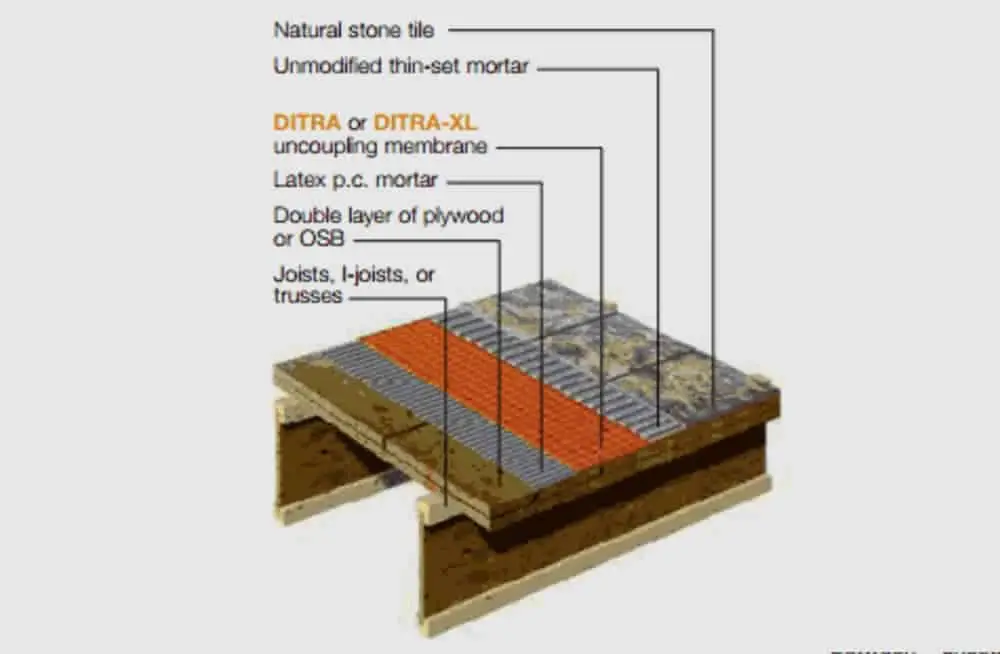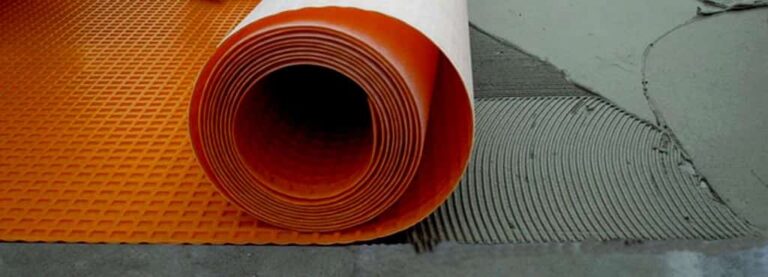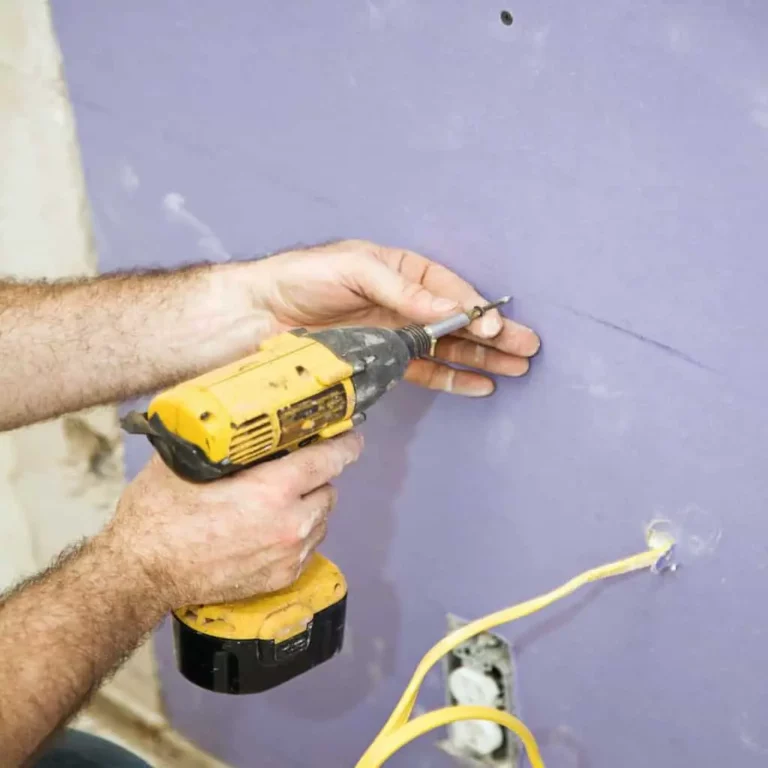Is Ditra Necessary on Plywood?

If you’re working on a bathroom or kitchen project, you’ve probably ruled out wood flooring thanks to the potentially humid environment and its effects on exposed wood. While tiling your floor is the right option, you cannot directly place tiles over plywood without a cushion.
Ditra is necessary on plywood floors if you wish to fix tiles over them. Applying tiles directly to plywood can cause them to crack as the brittleness of the two structures is too close to form flexible layers. You can also use other types of priming if Ditra isn’t available.
The rest of this article covers the most frequently asked questions regarding tiling and flooring for bathroom and kitchen projects. You’ll learn why putting floor tiles directly over plywood is dangerous, if you should prime plywood walls before tiling, and how Ditra compares to cement board, among other subjects.
Can I Put Floor Tile Directly Over Plywood?
While it is possible to fix tiles directly over plywood, doing so will cause cracks in the tiles. Since this is the most commonly cited reason to avoid tiling directly over plywood, many DIY hobbyists might believe ordering thicker tiles is the solution.
If you use thick tiles and fix them sufficiently over plywood, you can avoid cracks even without Ditra. This doesn’t make the layout appropriate because the wood underneath is exposed to water and moisture.
Remember that there’s no such thing as perfectly sealed floors with only a layer of tiles. Instead of causing irreversible damage to your floor with a tiles-over-wood placement, you can simply opt for a primer with sealing qualities to sufficiently cushion the middle.
Do I Need To Prime Plywood Before Tiling?
Whether you’re using a cement-backer board, a green board, or Ditra, it is advisable to use a sealing primer over plywood before tiling. This is to make the adhesive stick properly and keep the foundation from receiving water damage as tiling is done in generally humid regions.
If you’re tiling for aesthetic purposes in a dry environment, you can get away with using a strong adhesive and no sealing primer. If you apply tiles on the exterior, assume a humid environment, regardless of how dry the climate generally is. By protecting against water in an otherwise arid environment, you’re making sure sudden rain doesn’t inflict lasting damage to your tiles.
Kilz Kitchen And Bath Primer is a great all-purpose sealing primer for any interior with water and humidity. Whether you’re tiling your kitchen walls or bathroom floors, you want to minimize the chances of mildew, mold, and water stains. This latex-based primer isn’t just water-resistant but is also excellent at blocking stains.
It works well with drywall and wood, making it perfect for plywood priming, especially if you intend on using a green board layer over plywood. The product has over 600 reviews and ratings, coming to a collective average of 4.7 out of 5 stars.
Which Thin-Set To Use With Ditra?
If you’ve set your mind on using Ditra with plywood, you must understand the catch 22 that comes when using a thin-set with a covering that can interfere with the thin-set air-drying process. It is advisable to factor in the material you’re fixing Ditra to as that dictates the ideal thin-set.
If you’re fixing Ditra to cement or gypsum, you can go ahead with using unmodified mortar. In contrast, the thin-set used for Ditra over plywood is supposed to be modified to off-set the air-drying interference.
What Is Better: Ditra or Cement Board?
When you work on a home improvement project, you have to consider the opportunity cost with every choice you make. Ditra, despite being the general go-to option for floor tiling, isn’t the only covering you can use with plywood. The other contender is cement backer boards, which can also provide sufficient cushion and hold tiled with enough flexibility. Here’s a brief comparison of the two options.
Advantages of Ditra
- Virtually waterproof
- Lightweight and easy to install
- Enough support material available online should you get stuck on a step
- Readily available in more areas.
Drawbacks of Ditra
- Requires a lot of thin-set and specific varieties in certain situations.
- Costly compared to alternatives, especially over larger areas.
Advantages of Cement Boards
- Mold and mildew resistance
- Complete protection from rotting and insects
- Can have better aesthetic appeal than Ditra
Drawbacks of Cement Boards
- Hard to install and may require paid labor
- Not the best option for floors, at least for smaller projects.
Which One Should You Use?
Considering the above pros and cons, it is clear that you should go with Ditra for floors, and cement boards are better left for siding and walls. Remember that while Ditra is easy to install, it is generally not meant for walls. If you use the same roll for floors and walls, expect some helping hands on the project.
What Kind of Plywood Do You Use for the Subfloor Under Tile?
Many project owners treat tiles as an afterthought once they’ve laid plywood for the subfloor already. This might be awkward because not all plywood is made equal. Since tiles are usually used in places where humidity and water spillage are expected, you should opt for plywood to sustain water exposure.
In this instance, most interior-grade plywood fails to pass the requirement. If you’re using such plywood, you must use a heavy sealing primer before moving forward with additional Ditra or cement board layers and tiling.
Exterior-grade plywood is perfect for subfloor under tiles. Most manufacturers understand that a house’s exterior is exposed to the elements and hedge against rainfall and humidity by designing products that don’t get damaged by water easily. That is why exterior plywood is reasonably water-resistant and sturdy.
Things To Keep in Mind When Tiling a Floor
Now that you understand the role of Ditra, whether or not you should prime your plywood, and what kind of plywood to use, let’s go over some best practices for your project.
Cut Tiles Properly
If your tiling project is for your bathroom, you have to treat the floor with the same aesthetic specificity as a wall. That is because a lot of showering time is spent staring at the floor. Cutting tiles thinner or slightly over the halfway mark will create oddities that draw your guests’ attention. Either use full tiles or cut them in half. Arrange them to avoid the need for narrower cuts.
Know Your Focus Area
Survey the bathroom or kitchen and notice the most prominent areas. These are where one’s focus naturally wanders because of lighting, room layout, and personal proximity. Make sure that these areas are covered with full tiles. Even though half tiles are acceptable elsewhere, you don’t want significant cuts occupying a focus area.
Maintain Layout Symmetry
If tiling is a DIY project for you, you run the risk of introducing asymmetry to your layout. The best way to avoid this is by fixing nails parallel to each other on either side of the floor and tying a thread between the heads. This can work as a guide for your tile application. Generally speaking, if one row of tiles is fixed correctly, the rest is easier to fix with appropriate symmetry.
Final Thoughts
When fixing tiles on plywood, you should use Ditra as it adds to the floor’s water resistance while giving enough cushion for the tiles to avoid premature breakage. While Ditra can be expensive to acquire, it saves money in water-damage repairs and labor costs. You can also opt for cement boards as long as you prime the plywood appropriately.
Finally, you can use exterior-grade plywood with proper priming and do away with tiling altogether.





